What Is CBD Oil? What Does Cannabidiol Stand For?
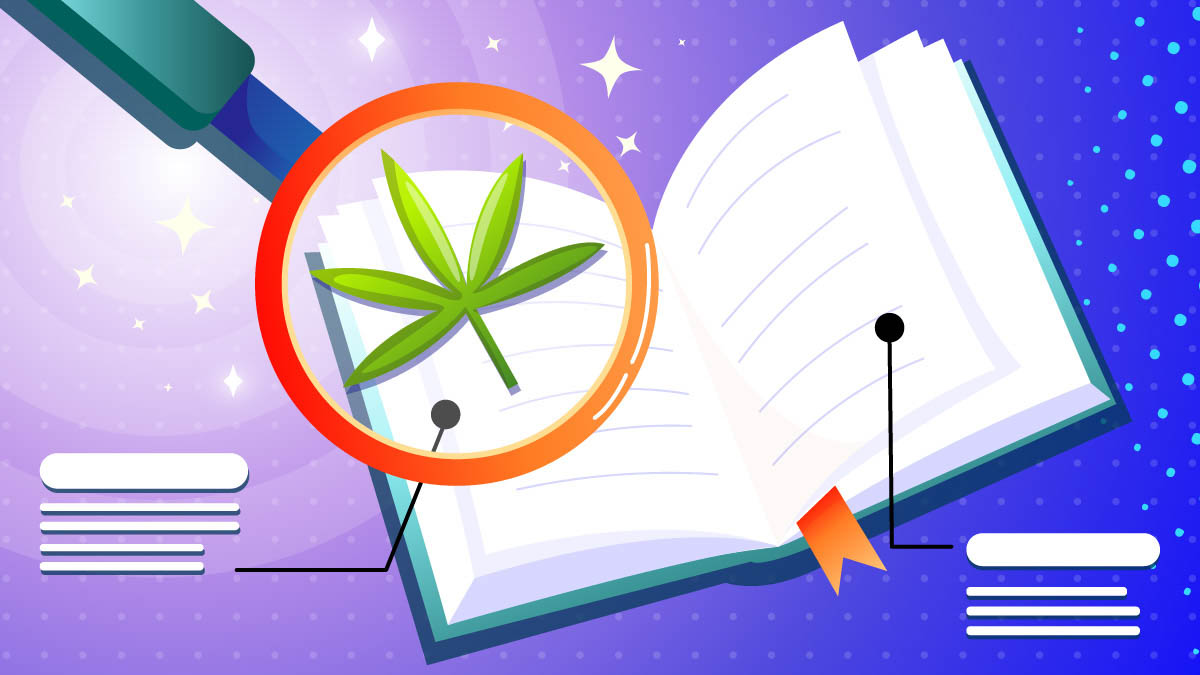
Everyone’s talking about CBD and its benefits.
Whether you’ve seen it mentioned on television, heard something on the news, or been told about it by a friend, CBD has likely garnered your attention.
However, finding clear, decent information on what CBD is, what it does, and whether you can legally buy it in the first place has probably proven a challenge.
Don’t worry — been there, done that.
That’s why I’ve prepared a guide for all the new users who’d like to learn about CBD but don’t have the time to seek answers sifting through the internet — not knowing what’s true and which claims are exaggerated.
Continue reading to find information on what CBD is, how you can benefit from it, and whether it might be a good fit for your lifestyle.
What is CBD?
CBD — short for cannabidiol — is one of the two most abundant cannabinoids naturally found in cannabis plants.
These cannabinoids are the active compounds responsible for an array of benefits from cannabis.
This is where the first concerns may start to arise.
Before I give you a detailed look into CBD, it’s important to stress that while CBD comes from cannabis, CBD can’t get you high — because it’s not psychoactive.
The high is caused by the other cannabinoid — THC (tetrahydrocannabinol).
Where Does CBD Come From?
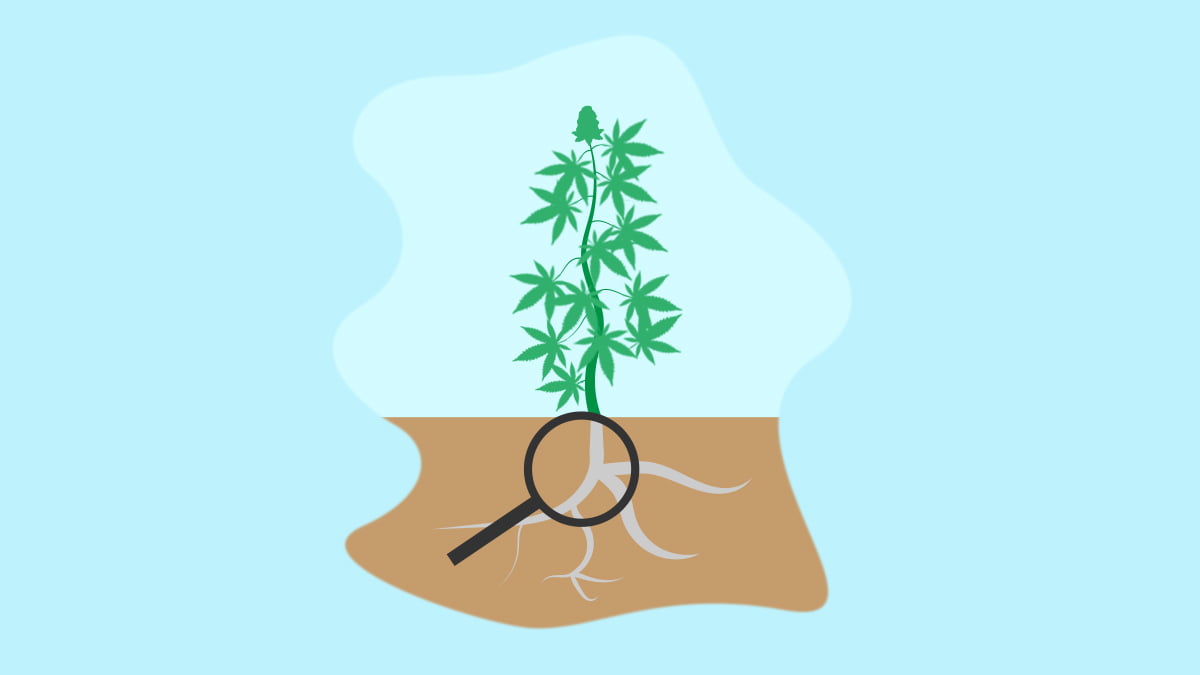
Cannabis plants contain over 400 different compounds, 113 of which have been identified as cannabinoids and are unique to the cannabis family of plants.
The concern about getting high from cannabis products that contain CBD comes from the fact that CBD oil can be sourced from two different cannabis plants — hemp and marijuana.
Hemp vs. Marijuana
Hemp and marijuana are the two members of the Cannabis sativa species. Although they’re the same species, they comprise totally different chemotypes (chemical profiles).
Both varieties can be used to harvest CBD with similar health benefits.
However, the source of your CBD oil determines whether the product is psychoactive and, above all, legal in a given state.
CBD can come from the flowers of hemp or marijuana, depending on the source. Many consumers claim that CBD derived from marijuana is more potent because of the way THC and CBD work together in the body.
But in fact, hemp-derived CBD demonstrates a wealth of documented health benefits as well.
Have a look at the table below to understand the exact differences between these two plants:
| Qualities | HEMP | MARIJUANA |
| Is it Cannabis? | Yes | Yes |
| Chemical Makeup | High CBD / Low THC (< 0.3%) | High THC (5%–35%) / Med-Low CBD (<1%) |
| Psychoactive? | No | Yes |
| Growing conditions | Adaptable to thrive in most climates requires minimal care | Cultivated under carefully controlled conditions |
| Applications | Food, supplements, clothing, ropes, housing, automobiles | Medical and recreational use |
How CBD Works
To understand how you can benefit from CBD, you’ll need to understand the way it interacts with the body and brain.
The key term in this section is “The Endocannabinoid System” (ECS).
Not familiar with the ECS?
I’ll try to explain everything as clearly as possible.
The Endocannabinoid System
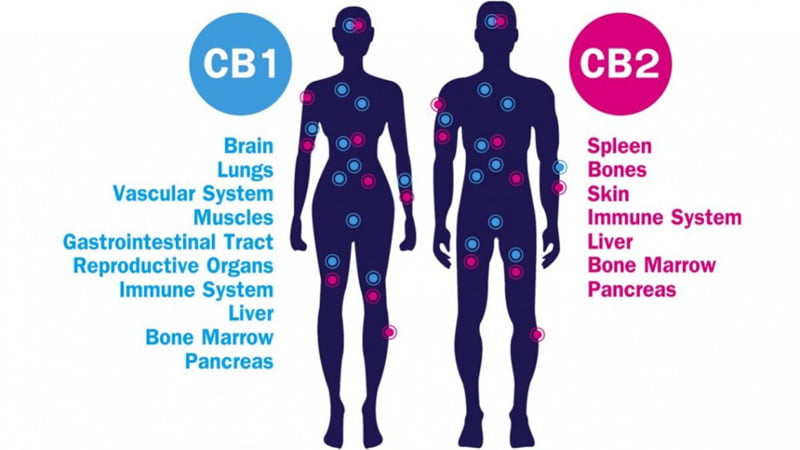
In essence, the endocannabinoid system is a complex network of receptors and neurotransmitters located throughout the entire body, with the highest concentrations in the nervous and immune systems. Its role is to maintain homeostasis of various organs in the body.
Researchers argue that ECS is the imperative system and the bridge between the two above networks.
This system is regulated by two chemicals produced in the human body — anandamide and 2-arachidonoyl glycerol (2-AG). These are the two most well-studied endocannabinoids.
The endocannabinoid system controls major biological functions in the body, including:
- The immune response
- Cognitive function
- Pain transmission
- Memory
- Mood
- Fertility and pregnancy
- Appetite
- Body temperature
ECS involves two main types of receptors, each with slightly different properties. They’re called CB1 and CB2 receptors.
CB1 Receptors
CB1 receptors appear in the central nervous system (the brain and spinal cord), as well as some areas of the peripheral nervous system (the body).
The highest concentrations of these receptors can be found in 3 key brain sections:
- The Cortex (controls all higher brain functions)
- The basal ganglia (produces dopamine)
- The hippocampus (plays a key role in cognitive performance)
CB1 receptors play an important role in regulating mood, memory, appetite, sleep, reproduction, pain transmission, and cardiovascular function.
Does any of this sound familiar with the many effects of cannabis?
That’s because chemicals like THC are very similar in their chemical structure to anandamide and thus can mimic its actions on CB1 receptors.
CB2 Receptors
CB2 receptors are mostly found in blood and immune cells. The immune cells are responsible for identifying and destroying viruses, bacteria, and cancer cells. It’s through this system that CBD offers the vast majority of its health benefits.
But why exactly does CBD have so many positive effects on the body?
CBD is a CB1 and CB2 modulator, making them more sensitive to anandamide. This helps to maintain the chemical stability in the body, turning UP hypoactivity, and turning DOWN hyperactivity.
CBD interacts with other receptors as well.
For example, it can ease pain by stimulating vanilloid receptors and opioid receptors. Both of these regulate the transmission of pain from the body to the brain. Each time these receptors are activated, they mitigate the pain signaling, so the brain filters that sensation out.
However, CBD can also interact with the body through several receptor-independent routes. As a matter of fact, it operates on more than 60 molecular pathways.
Explaining the Difference Between CBD vs THC
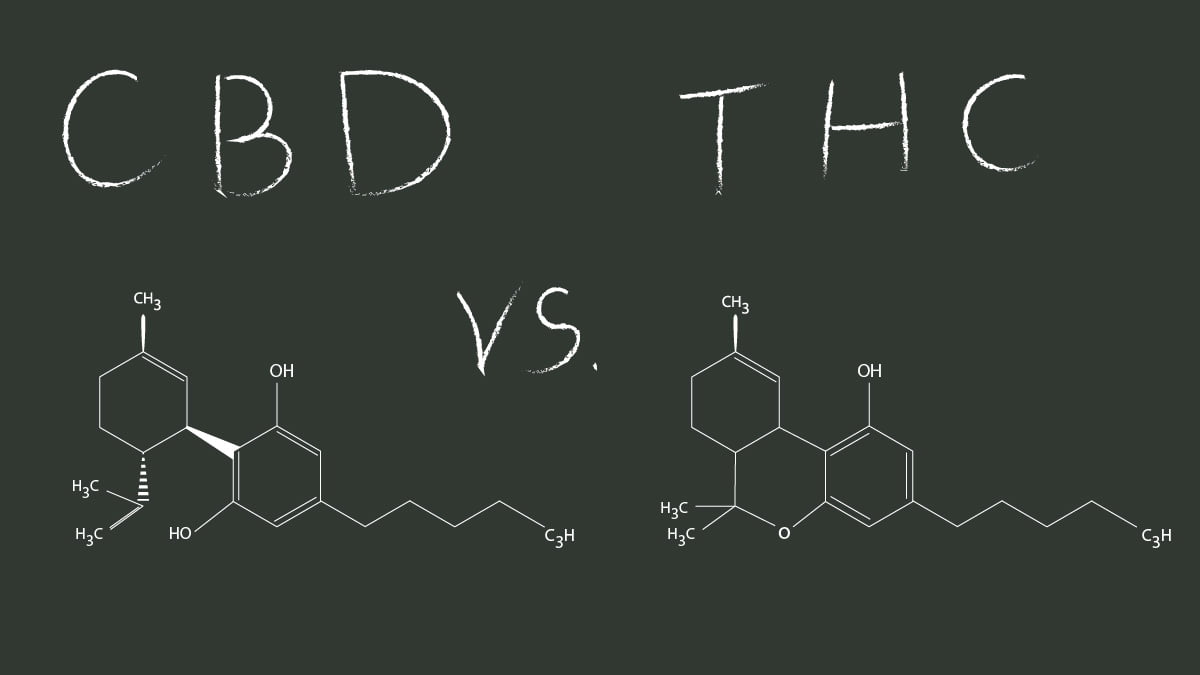
As mentioned above, THC and CBD are both cannabinoids, chemicals occurring naturally in the cannabis plant. Moreover, each has unique and similar effects and benefits commonly sought after for a range of therapeutic purposes.
The main difference between THC and CBD is that the latter is non-psychoactive. In other words, it can’t get you high. CBD is actually thought to have more effect on the body, while THC shows greater activity in the brain.
Interestingly, CBD can alter the psychoactive effects of THC when taken simultaneously. This is partly the reason why high-CBD strains are typically believed to be “low-quality weed” by people who are unaware of the benefits of CBD.
Although very closely related, CBD and THC have several significant differences:
| CBD | THC |
| Non-psychoactive | Psychoactive |
| CB1 and CB2 modulator | CB1 and CB2 stimulant |
| Blocks pain | Eases pain |
| Mild appetite suppressant | Strong appetite booster |
| Antiepileptic | It can boost the antiepileptic effects of CBD |
| Best for anxiety, inflammation, pain, and common sleeping disorders | Best for euphoric effects, focus, and appetite stimulation |
| “Body high” | “Cerebral high” |
| Side effects may include drowsiness and dry mouth | Side effects may include anxiety, dizziness, and a physical “couch-lock” effect |
What Does CBD Do?
The science behind the effects of CBD is very exciting, something you probably never heard of at school.
Since the endocannabinoid system maintains chemical balance in the body (affecting a variety of key functions), and CBD is the modulator to its receptors, consistent supplementation with CBD helps regulate important bodily processes, leading to optimal health and a range of benefits.
Health Benefits of CBD
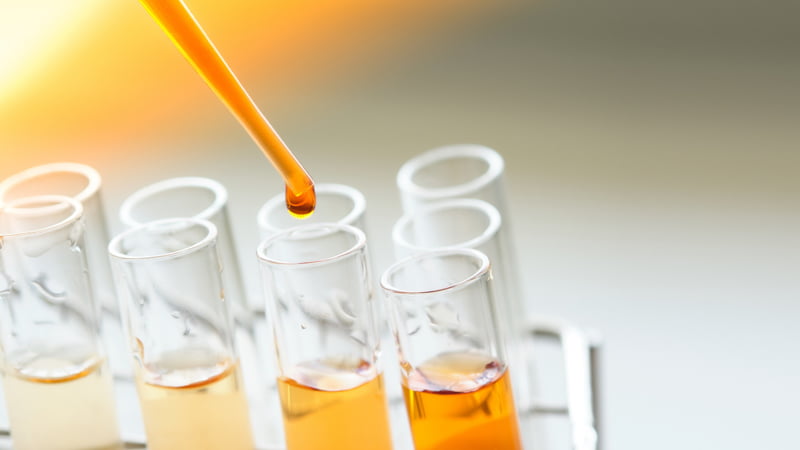
CBD is not a cure-it-all compound. I rather think of it as a tool that, when used wisely, may greatly improve your well-being, and if your inner balance falls out of whack, you might be surprised at how effective it is in reaching the roots of the problem and relieving its symptoms.
The most notable benefits of CBD include:
- Reduced inflammation
- Protection against free radical damage
- Support for nerve function
- Reduced anxiety
- Elevated mood
- Blocked pain transmission
- Reduced tumor growth
- Greater resistance to stress
Potential Medical Applications of CBD
People use CBD for a wide range of health conditions. As mentioned, this is caused by the fact that CBD fixes a system that is used to regulate an array of important processes in the human body. By interacting with this complex network, you can effectively control these other processes as well.
CBD is used for:
- Anxiety
- Cancer
- Chronic pain
- Cognitive disorders
- Depression
- Diabetes
- Epilepsy
- Insomnia
- MRSA infections
- Obsessive-Compulsive Disorder
- Opiate withdrawal and addiction
- Osteoporosis
- Parkinson’s Disease
- Poor stress management
- Rheumatoid arthritis
- Smoking addiction
- Systemic Lupus Erythematosus (SLE)
Below I cover the most common medical applications of CBD.
CBD For Anxiety
CBD lowers anxiety by regulating several key neurotransmitters associated with this condition. It modulates serotonin, epinephrine, dopamine, and norepinephrine in the brain. In addition, it acts on the GABA receptors to turn down our inner volume when we get aroused. This results in feelings of relaxation and calmness.
CBD For Epilepsy
CBD oil is widely used due to its potential to reduce the frequency and severity of seizures without the negative impact of more commonly prescribed treatments. A 2016 study reported significant improvements in the number of seizures in children with Dravet Syndrome — a rare form of epilepsy. In 2018, the first CBD-based drug, Epidiolex, was approved by the FDA.
CBD For Pain
CBD has several unique properties that make it effective for alleviating pain. CBD acts on a special type of receptor known as the vanilloid receptor (TRPV1). This receptor is used in the body to control pain and regulate body temperature. In addition, CBD modulates the CB1 and CB2 receptors in the endocannabinoid system, which play a key role in pain transmission in the spinal cord and the brain.
CBD For Inflammation
Short-term inflammation is nothing bad, but chronic inflammation may often lead to a number of serious autoimmune diseases. CBD has been shown by many studies to provide potent anti-inflammatory effects on different types of inflammatory diseases. The list includes inflammatory bowel disease, autoimmune conditions, vascular inflammation, and neuroinflammation.
CBD For Nausea
CBD has been recognized for some time for its potential to reduce nausea in those suffering from chemotherapy-induced nausea and vomiting. The key function of CBD, in this case, is its ability to inhibit the breakdown of anandamide in the brain; higher anandamide levels in the body can reduce the sensation of nausea, block vomiting, and increase appetite in patients.
CBD And Addiction
Withdrawal symptoms from opioid or smoking addiction are serious roadblocks on our way to moving forward. Recent studies have suggested that CBD may help relieve withdrawal symptoms by reducing anxiety and cravings in those who have gone cold turkey, leading to more successful cessation and treatment.
CBD And Acne
CBD oil is a rich source of antioxidants, essential fatty acids, and anti-inflammatory compounds, all of which can contribute to reduced acne and improved skin health. CBD reduces inflammation in the skin, speeds up regeneration processes, and regulates the production of sebum in the body.
CBD For Type 1 Diabetes
In essence, Type 1 Diabetes is an immune disorder triggered by an individual immune system’s attack on the pancreas. CBD may help with the management of this condition by reducing inflammation of the pancreas and thus helping your body to regulate insulin and blood sugar levels.
CBD As a Neuroprotective
One of the most remarkable qualities of CBD is its neuroprotective effects. Using CBD on a regular basis has been shown to improve the formation of myelin, a compound that forms a protective layer around the nerve cells, allowing for faster nerve transmission. When this function gets compromised, it may result in a range of neurodegenerative conditions, such as Alzheimer’s Dementia, and multiple sclerosis (MS).
CBD And Cancer
CBD has been shown to promote programmed cancer cell death (apoptosis) in certain types of cancer. The compound can also prevent the spread of cancer between organs by blocking the adhesion of tumor cells to new types of tissues.
What are the Side Effects of CBD?
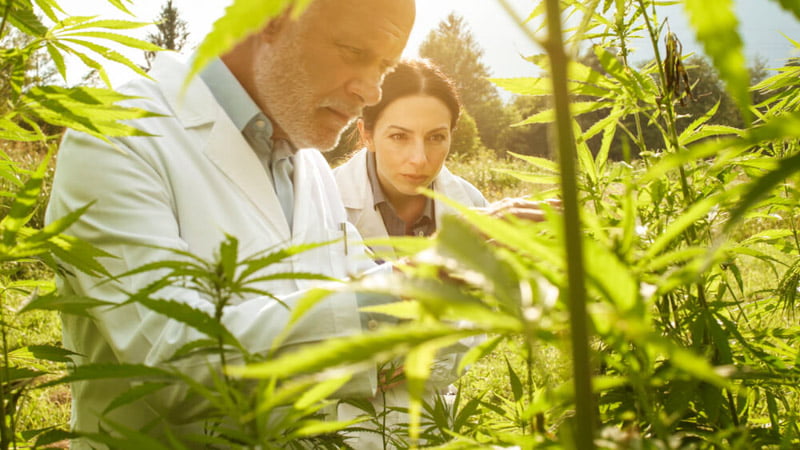
One of the reasons why CBD has become so popular as a natural alternative to many prescription medicines is the lack of severe adverse effects.
CBD has a considerable safety profile, which makes it suitable for both children and adults alike. Studies report that CBD is safe and free from unwanted reactions in doses as high as 1500mg — which is 5 to 6 times the high end of the dosage scope.
In some rare cases, individuals may experience the following side effects:
- Dry mouth
- Low blood pressure
- Drowsiness
- Lightheadedness
How to Use CBD?
CBD is available in many different formats. Current extraction technology allows for incorporating this cannabinoid into a range of products, such as:
- Oil drops
- Tinctures
- E-liquid (for vaping)
- Sublingual spray
- Gummies & Edibles
- Capsules
- Body care products
- Crystalline powder (pure CBD aka isolate)
You can find CBD in more concentrated forms — these are called CBD dabs — which are useful for conditions that call for higher doses of cannabidiol. This includes cases like cancer and epilepsy.
They are made similar to marijuana dabs such as wax, budder, crumble, or shatter, save for the lack of THC.
The majority of CBD products are full-spectrum extracts, meaning they also contain other cannabis compounds, including some THC. Nevertheless, when you buy hemp-derived CBD oil, you only get 0.3% of THC per volume, which isn’t enough to get you high. Hemp-derived CBD is also legal in all 50 states, unlike its marijuana-derived counterpart.
How Much CBD Should I Take? Adjusting CBD Dosage to Your Needs
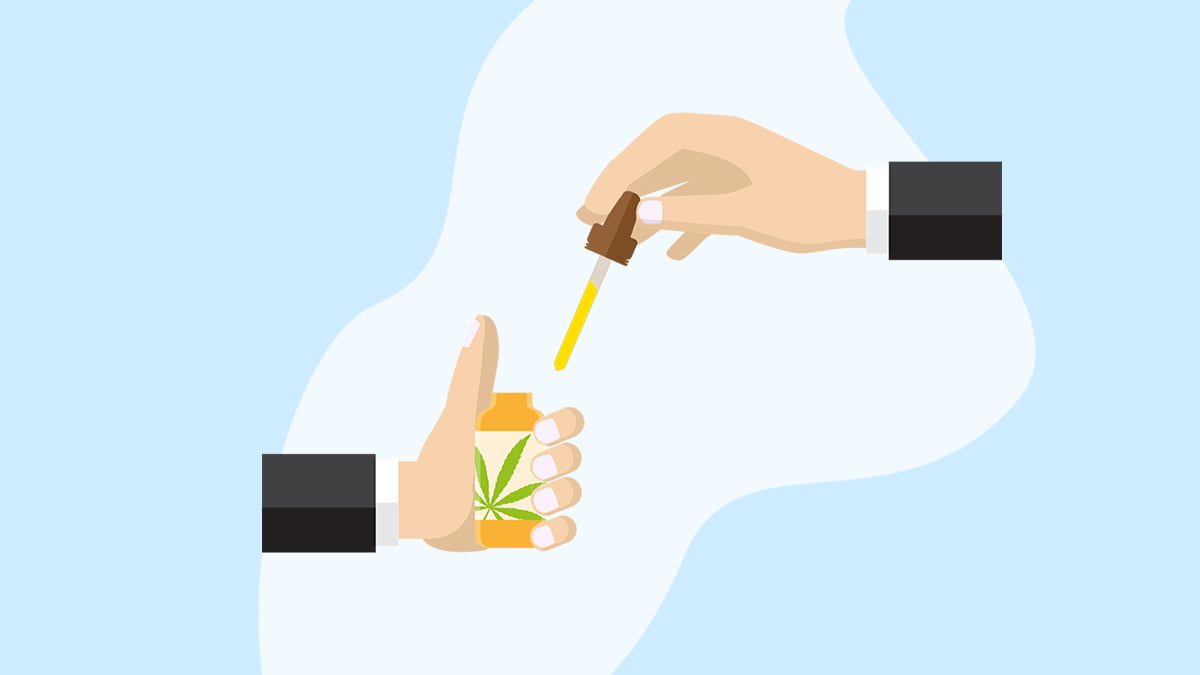
There aren’t specific dosage guidelines for CBD because the dosage depends on too many factors.
Your age, sex, weight, metabolism rate, lifestyle choices, the purpose you want to use CBD for — they all come into play.
Depending on the above, CBD dosages can range from 1 mg to 200 mg at a time, so new users may find it difficult to decide on the appropriate dose.
The general rule of thumb is to start low and slow, and gradually build up to a dose that gives you satisfying effects. Many people use 1 mg as their starting point and double this over time until they begin to feel the difference.
For example, you can start with 1 mg and take this dose for a few days, then increase to 2 mg, then 4 mg, 16 mg, etc. until you notice the effects.
If you experience any side effects, simply cut down on the dosage for a bit during the next dose.
Below I share a more general dosage guideline based on the individual’s weight. I divided the effects into three categories:
- Mild
- Moderate
- Strong
You can use this to get a decent point of reference for your future supplementation.
CBD Dosage Chart for Beginners:
| Weight | Dosage for mild effects | Dosage for moderate effects | Dosage for strong effects |
| Less than 130 lbs. | 11 mg or less | 12 mg – 14 mg | 15 mg – 17 mg |
| 130 – 230 lbs. | 18 mg or less | 19 mg – 23 mg | 24 mg – 27 mg |
| More than 230 lbs. | 23 mg or less | 24 mg – 30 mg | 31 mg to 45 mg |
Remember that in cases of epilepsy or cancer, the dosage requirements will be significantly higher. Epilepsy patients usually take 200 mg – 300 mg of CBD daily.
Is CBD Legal?
The legal status of CBD is very clear thanks to the 2018 Farm Bill.
All CBD products derived from hemp are federally legal.
If you’re looking for marijuana CBD oil, then it’s up to your state’s laws. Currently, 11 states allow for the recreational use of marijuana, while 37 states employ a medical marijuana treatment program in some form.
If you live in Canada or Uruguay, you can freely use every form of CBD, as these countries have entirely legalized cannabis.
Where Can I Buy CBD Oil?
CBD is an amazing compound, a natural way to alleviate a variety of conditions and improve your daily functioning.
However, as with all good things in life — quality is paramount.
You need to make sure your oil comes from high-quality (preferably organic) hemp plants and a reputable provider that can deliver top-notch standards while meeting the regulations of federal law and your state.
CBD is sold both online and locally, but since a large share of local vendors have their own quality standards and often sell CBD products for leveraged prices, I recommend buying CBD oil online.
Just make sure you research potential vendors, read reviews, and take time to understand the laboratory testing practices before deciding on any particular product.
It’s your health that is at stake; there’s no room for using half-measures.
Summing it All Up: What is CBD?
CBD is a powerful and versatile compound that modulates the human endocannabinoid system.
By operating on so many pathways — both receptor-based and receptor-independent pathways — it can produce a wide range of positive effects on the body and brain.
CBD is by no means a miracle maker, nor is it an overnight fix for your problems. Instead, you should think of it as an excellent tool for enhancing your quality of life, along with a healthy lifestyle and a well-balanced diet.
I hope this guide has helped you get a better understanding of the basic science behind the effects and benefits of CBD.
References:
- Sales, A.J., Crestani, C.C., Guimaraes, F.S. & Joca S.R.L. (2018). Antidepressant-like Effect Induced by Cannabidiol is Dependent on Brain Serotonin Levels. Progress in Neuropsychopharmacology and Biological Psychiatry, 30(86), 255–261.
- Pretzsch, C.M. et al. (2019). Effects of Cannabidiol on Brain Excitation and Inhibition Systems; A Randomised Placebo-controlled Single Dose Trial During Magnetic Resonance Spectroscopy in Adults With and Without Autism Spectrum Disorder. Neuropsychopharmacology, 44(8), 1398–1405.
- Michal Tazdok, et al. (2016). CBD-enriched Medical Cannabis for Intractable Pediatric Epilepsy: The Current Israeli Experience. Seizure, 35, 41–44.
- Costa, B., Giagnoni, G., Franke, C., Trovato, A. E., & Colleoni, M. (2004). Vanilloid Trpv1 Receptor Mediates the Antihyperalgesic Effect of the Nonpsychoactive Cannabinoid, Cannabidiol, in a Rat Model of Acute Inflammation. British Journal of Pharmacology, 143(2), 247–250.
- Manzanares, J., Julian, M., & Carrascosa, A. (2006). Role of the Cannabinoid System in Pain Control and Therapeutic Implications for the Management of Acute and Chronic Pain Episodes. Current Neuropharmacology, 4(3), 239–257.
- Booz, G.W. (2011). Cannabidiol as an Emergent Therapeutic Strategy for Lessening the Impact of Inflammation on Oxidative Stress. Free Radical Biology and Medicine, 51(5) 1054–1061.
- Parker, L. A., Rock, E. M., & Limebeer, C. L. (2011). Regulation of Nausea and Vomiting by Cannabinoids. British Journal of Pharmacology, 163(7), 1411–1422.
- Lee, J.L.C., Bertoglio, L.J., Guimaraes, F.S., Stevenson C.W. (2017). Cannabidiol Regulation of Emotion and Emotional Memory Processing: Relevance for Treating Anxiety-related and Substance Abuse Disorders. British Journal of Pharmacology, 174(19), 3242–3256.
- Oláh, A., Tóth, B. I., Borbíró, I., Sugawara, K., Szöllõsi, A. G., Czifra, G., … Bíró, T. (2014). Cannabidiol Exerts Sebostatic and Antiinflammatory Effects on Human Sebocytes. the Journal of Clinical Investigation, 124(9), 3713–3724.
- Lehman, C., Fisher, N.B., Tugwell, B., Szczesniak, A., Kelly M. & Zhou, J. (2016). Experimental Cannabidiol Treatment Reduces Early Pancreatic Inflammation in Type 1 Diabetes. Clinical Hemorheology and Microcirculation, 64(4), 655–662.
- Arévalo-martín, A., García-ovejero, D., Gómez, O., Rubio-araiz, A., Navarro-galve, B., Guaza, C., … Molina-holgado, F. (2008). Cb2 Cannabinoid Receptors as an Emerging Target for Demyelinating Diseases: from Neuroimmune Interactions to Cell Replacement Strategies. British Journal of Pharmacology, 153(2), 216–225.
- Sultan, A.S., Marie, M.A. & Sheweita S.A. (2018). Novel Mechanism of Cannabidiol-induced Apoptosis in Breast Cancer Cell Lines. Breast (Edinburgh, Scotland), 41, 34–41.